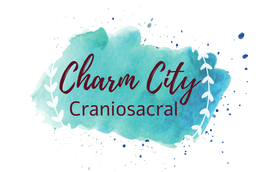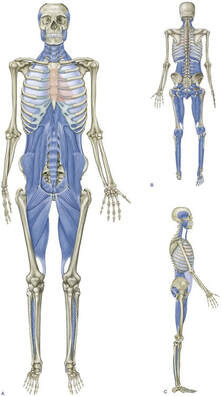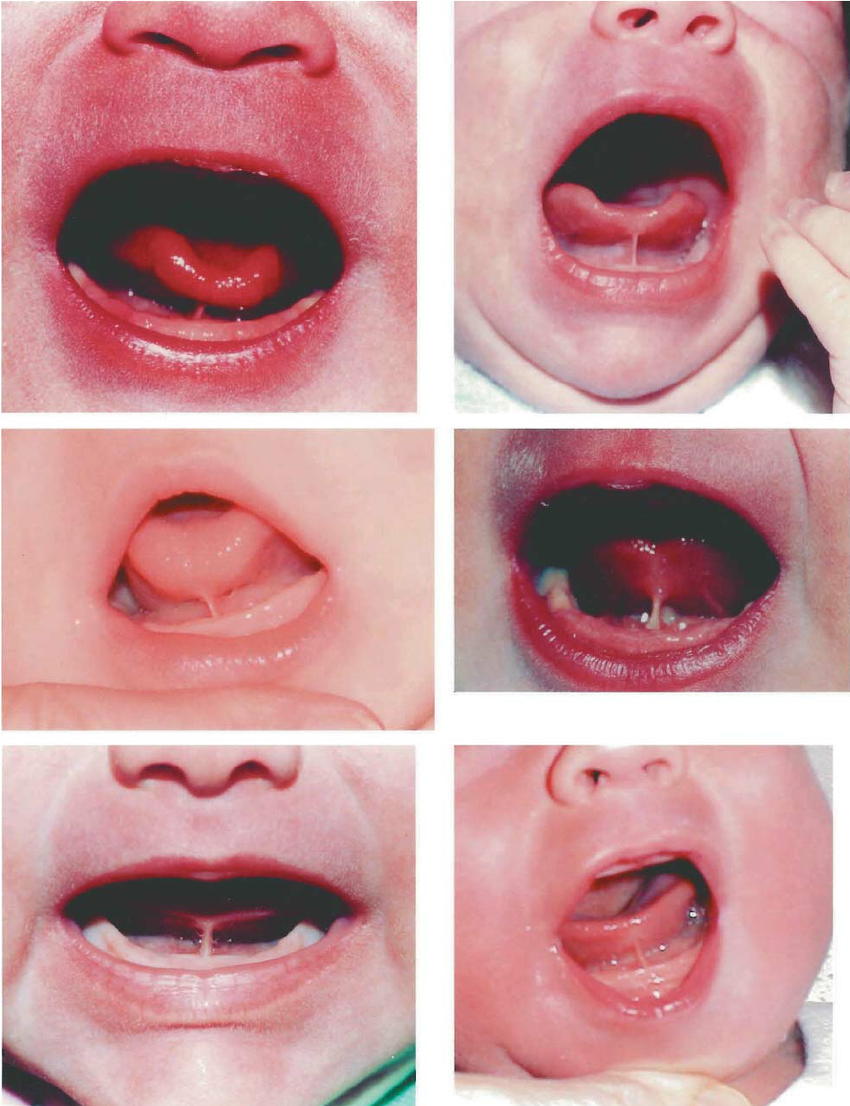Craniosacral therapy for lip, tongue, and buccal ties - pre, post, and in alternative to frenectomies.Part 1 - Basic Information about Tethered Oral Tissues Part 2 - Whole Body Anatomy and TOT Part 3 - Craniosacral Therapy Impacts, Pre & Post Care Information Whole Body Anatomy Of course any tethered oral tissues will affect oral motor capabilities and health - this makes sense the area of tightness is in the mouth, so the mouth would be directly affected. A common misconception is that the affects of a tethered oral tissue only remains in the mouth. Here we're really going to focus on tongue ties and how they impact the rest of the body. Fascial tissue is a type of connective tissue made primarily from collagen that surrounds and binds body parts together. If you've ever peeled that weird white layer off a chicken breast - that is fascial tissue. It can be thought of as an elastic band- with a certain threshold of stretchability before it starts to pull on other structures, or in some instability cases, breaks. One of the ways the whole body is impacted is through the deep front fascial plane, seen in the picture, that goes from the head and tongue all the way down to the toes. A tight, immobile, frenulum under the tongue can create a fulcrum of tension, immobility, and dysfunction down this entire front line. Infants A few key movements are needed for an infant to properly nurse at the breast/chest.
Tethered Oral Tissues can cause dysfunction in any or all of key nursing movements needed to properly feed.Let's put ourselves in our baby's experience:
I don't know about you, but even just reading all that gets my heart space a little tighter and activated. And I, as an adult, have logic to try and contend with it all. Tethered oral tissues can be such a systemic (affecting the whole body) problem because it sets an uneasy stage for one of the core functions of a baby's life - to eat. Adolescents and Adults Now we add in the functions of having to sit, crawl, walk, run, express oneself, learn, regulate stress - all from a dysregulated foundation. The adage " I have a TOT and I turned out FINE" is an easy one to peel away, when we start to realize just how integral and interrelated the body, mind, and spirit are. One of my favorite moments from an interaction at an expo. A dad says just that adage - whilst continually bouncing his leg, rubbing his temples from a headache, shares he has ADHD and Anxiety and Depression. Fine it is <3 We'll all come to a more holistic balance when we're ready. AND!Not all TOT are created equal. There are many cases where the presence of a tethered oral tissue does not equal dysfunction and something further throughout the central nervous system is the root fulcrum of dysregulation.
Continued in PART 3....
0 Comments
Craniosacral therapy for lip, tongue, and buccal ties - pre, post, and in alternative to frenectomies.Part 1 - Basic Information about Tethered Oral Tissues Part 2 - Whole Body Anatomy and TOT Part 3 - Craniosacral Therapy Impacts, Pre & Post Care Information Understanding the Common Language Frenulum: A piece of skin or connective tissue that anchors a semi-mobile body part.
Lip Tie: Dysfunction in the maxillary labial frenulum (tissue under upper lip) restricting and affecting flaring of the upper lip. This can often be misdiagnosed as the lip will flare but it will cause blanching (red based tissues turning white) in the frenulum, gumline, or lip itself. Blanching would still be indicative of a restricted tissue that needs further evaluation. Buccal Tie: Dysfunction in the buccal frenulums that attach the cheeks to the gum line. These are often what cause those cute dimples! These aren't often treated through a release unless they are severe. Class/ Severity Level of Tongue Tie : Primarily, I find most providers use the classification system from Laurence Kotlow, a pediatric dentist out of New York who is considered an expert in the field and developed the following metrics to determining the severity of a tongue tie.
Types of Tongue Ties : You might hear providers referring to the type of tie vs the class of tie. Often the are referencing the overall location of the tie. It can be an anterior (front) presenting ties, and/or posterior (back) ties. It is possible to have both. Posterior Tongue Ties are important to oral motor functioning and often missed or overlooked by release providers. Symptoms of Tethered Oral Tissue Dysfunction
Both infants and adults may experience symptoms related to a TOT. Infants
|
Archives
February 2023
Categories |
Links |
Contact UsCharm City Craniosacral
Tel: (443) 218 - 6309 [email protected] 8315 Dogwood Road Windsor Mill, MD 21244 by appointment only |
About UsRegistered Craniosacral Therapist
Integrative and Functional Nutrition Health Coach Reiki Master Charm City Craniosacral creates a truly elevated healing experience - from the physicality and inflammation of the body, to the true essence of SELF. You can find Sacred Happiness & Health here. |




 RSS Feed
RSS Feed